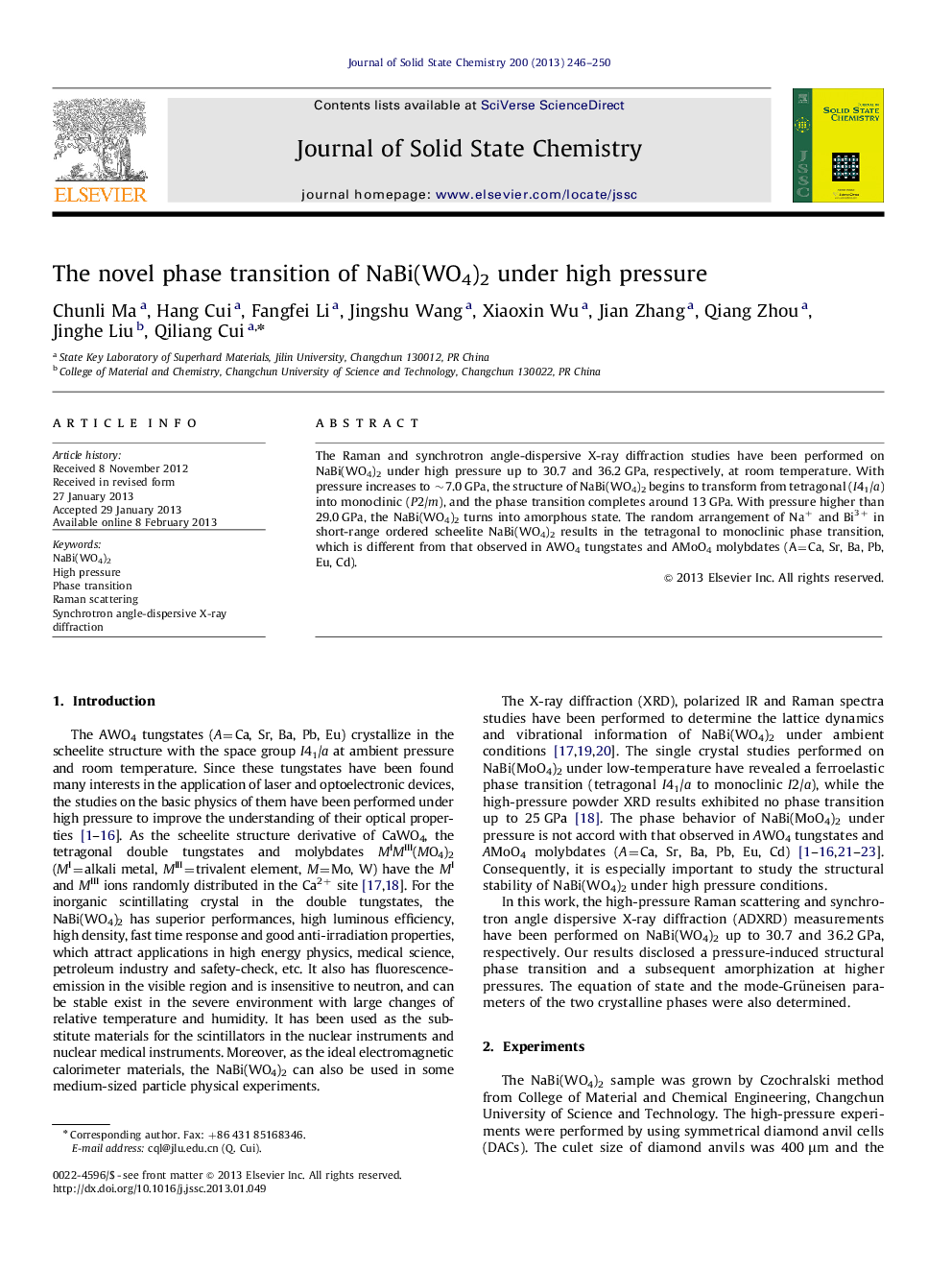| Article ID | Journal | Published Year | Pages | File Type |
|---|---|---|---|---|
| 1331217 | Journal of Solid State Chemistry | 2013 | 5 Pages |
The Raman and synchrotron angle-dispersive X-ray diffraction studies have been performed on NaBi(WO4)2 under high pressure up to 30.7 and 36.2 GPa, respectively, at room temperature. With pressure increases to ∼7.0 GPa, the structure of NaBi(WO4)2 begins to transform from tetragonal (I41/a) into monoclinic (P2/m), and the phase transition completes around 13 GPa. With pressure higher than 29.0 GPa, the NaBi(WO4)2 turns into amorphous state. The random arrangement of Na+ and Bi3+ in short-range ordered scheelite NaBi(WO4)2 results in the tetragonal to monoclinic phase transition, which is different from that observed in AWO4 tungstates and AMoO4 molybdates (A=Ca, Sr, Ba, Pb, Eu, Cd).
Graphical abstractThe NaBi(WO4)2 transforms from tetragonal into monoclinic, which starts around 7 GPa and completes at about 13 GPa. With pressure higher than 29 GPa, the NaBi(WO4)2 turns into amorphous state.Figure optionsDownload full-size imageDownload as PowerPoint slideHighlights► Raman and X-ray diffraction studies performed on NaBi(WO4)2 up to 30.7 and 36.2 GPa, respectively. ► The tetragonal (I41/a) into monoclinic (P2/m) phase transition is determined. ► With pressure higher than 29 GPa, the NaBi(WO4)2 ultimately turns into amorphous state. ► The ambient pressure bulk modulus and volume of tetragonal and monoclinic phases are obtained.
